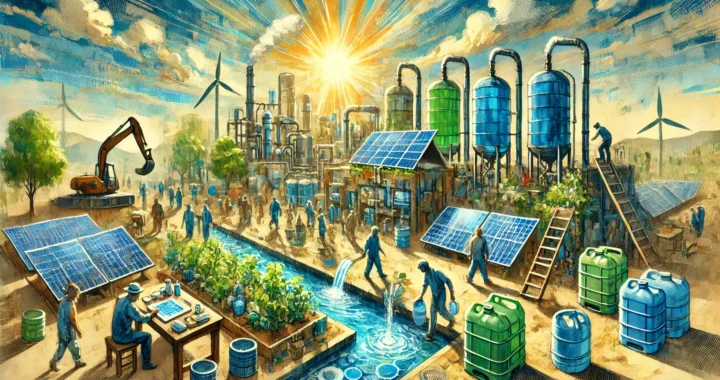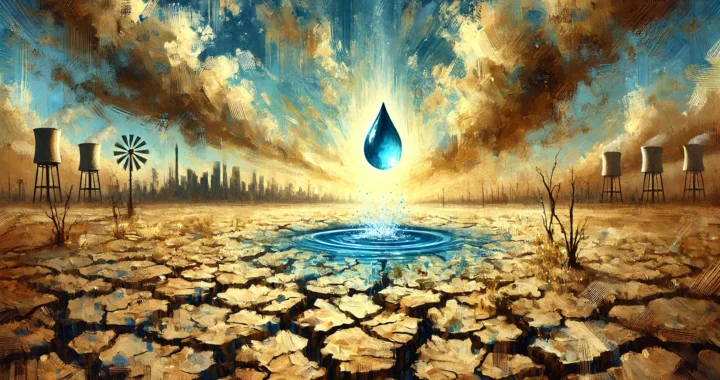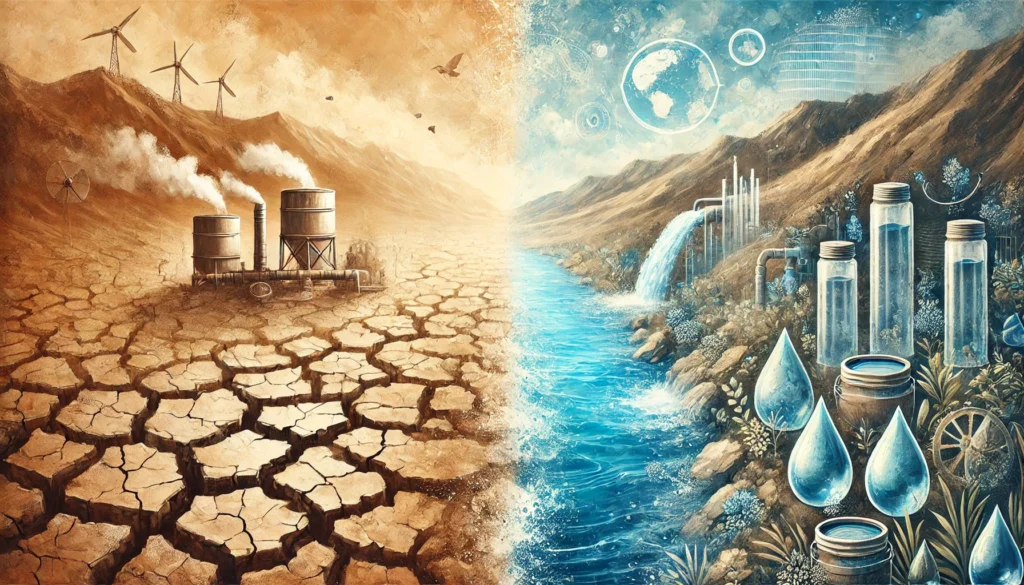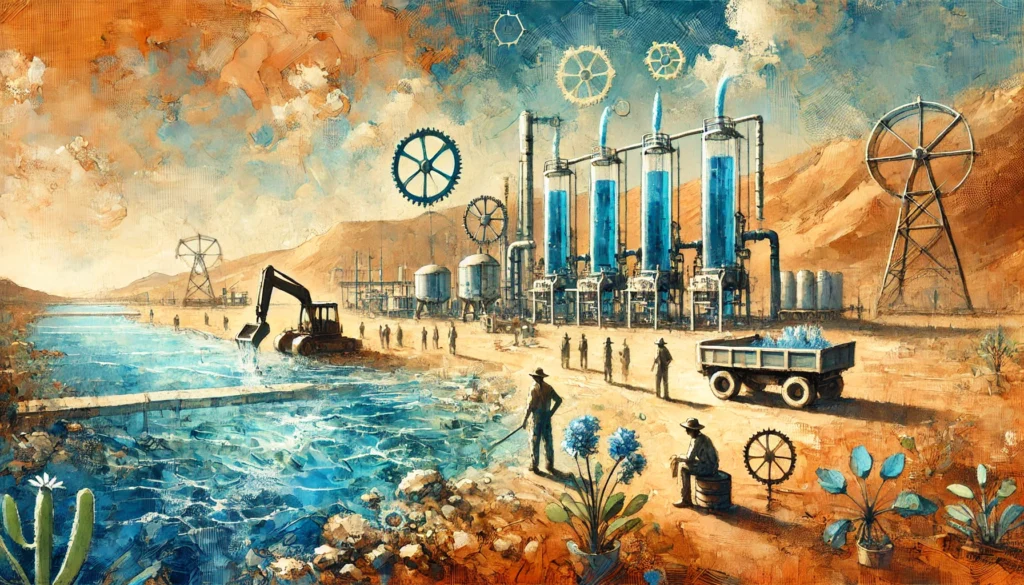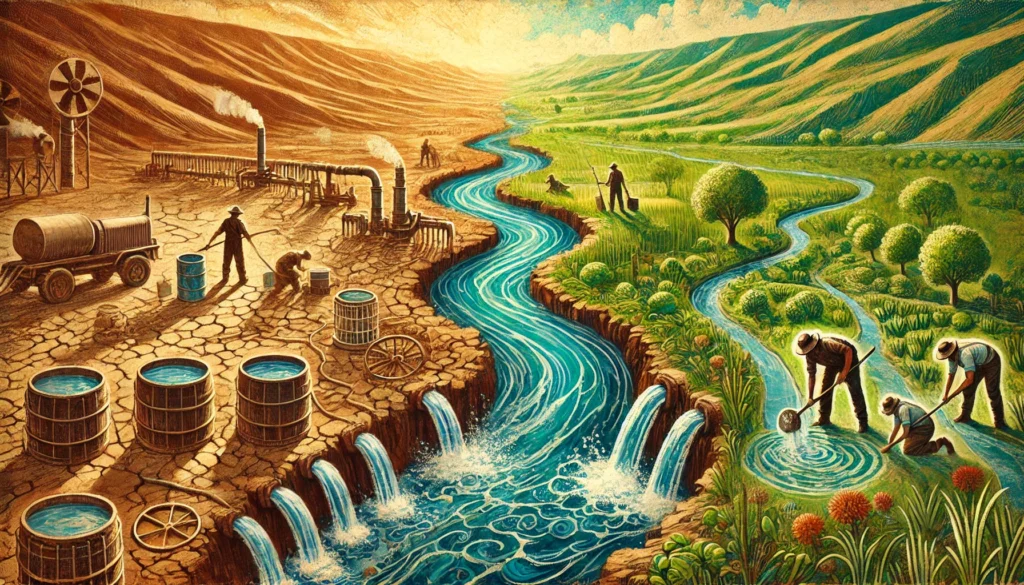Access to clean water is not just a basic human necessity; it’s the cornerstone of health, development, and sustainability. Yet, millions around the world still face daily struggles to secure safe water, grappling with scarcity, pollution, and inadequate infrastructure. From remote rural areas to bustling urban centres, the challenge of ensuring sustainable water resources persists, threatening both human well-being and ecological balance.
For individuals and communities, the stakes are high. Imagine a family in a drought-prone region where every drop of water comes at a cost—both financial and environmental. Or a small business in a developing country that cannot thrive because clean water is scarce or contaminated. These aren’t isolated stories; they represent a global crisis that demands innovative, practical solutions.
In this blog post, we’ll explore a range of groundbreaking strategies and technologies designed to tackle the global water crisis. From harnessing the power of solar energy for purification to empowering communities with sustainable water management practices, these solutions promise a future where clean water isn’t a privilege but a universal right. Whether you’re a policymaker, an entrepreneur, or a concerned global citizen, you’ll find insights here that inspire action and bring us closer to a world where water scarcity has become a problem of the past.
Let’s dive into these transformative ideas and discover how we can collectively build a sustainable water future.
The Global Water Crisis: An Overview
Water is essential for life, yet the global distribution and management of this resource remain deeply inequitable. While some regions have abundant water supplies, others face chronic shortages, exacerbated by population growth, urbanisation, and climate change. Understanding the scope of the water crisis is crucial to crafting effective solutions that address both immediate needs and long-term sustainability.

Key Challenges in Water Scarcity
- Over 2 billion people globally lack access to safe drinking water (UNICEF).
- India: 21 major cities, including Bangalore and Chennai, may deplete groundwater by 2030, risking 100 million lives (NITI Aayog).
- Cape Town, South Africa: Nearly reached “Day Zero” in 2018, exemplifying global water vulnerabilities.
Environmental Factors Worsening the Crisis
- Climate Change: Rising temperatures and erratic rainfall disrupt water availability, leading to prolonged droughts or floods. This impacts both water supply and agricultural yields, creating a ripple effect on food security.
- Industrial Pollution: Rivers like the Ganges remain heavily contaminated despite cleanup efforts. Industrial discharges, poor waste management, and insufficient regulations contribute to unsafe water sources, affecting millions.
Quick Wins for Addressing Water Scarcity
- Efficient Irrigation: Drip systems save up to 50% of water compared to traditional methods (FAO). Farmers adopting such systems also experience higher crop yields with less water wastage.
- Reforestation: Projects like Africa’s Great Green Wall restore water cycles and combat desertification. By planting trees, these initiatives replenish groundwater reserves and mitigate soil erosion.
- Urban Infrastructure: Fixing leaks can prevent up to 30% of urban water loss, a critical quick win. Cities like Tokyo have invested in advanced leak detection systems, cutting water loss significantly.
Top Innovative Solutions for Clean Water Access
Innovation has always been a driving force in addressing global challenges, and water scarcity is no exception. From harnessing renewable energy to utilising atmospheric resources, technological advancements are unlocking new ways to ensure clean water access for all. These solutions not only address immediate needs but also pave the way for sustainable, long-term management.
Cutting-Edge Technologies
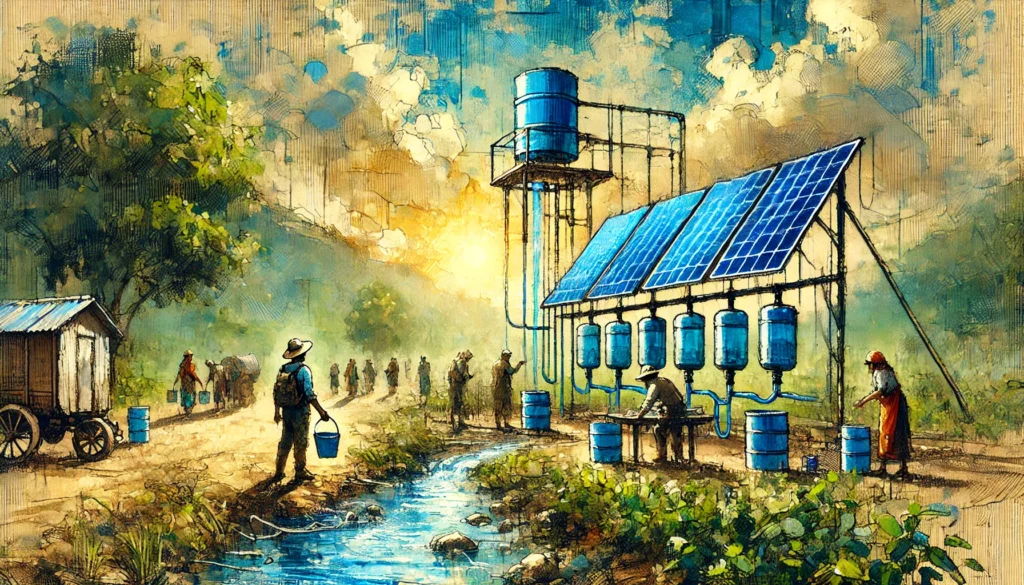
- Solar-Powered Purification:
- Example: Kenya’s Solar Water Project provides clean water to 400,000+ people using UV purification powered by solar energy. This solution is eco-friendly, cost-effective, and suitable for off-grid areas.
- Atmospheric Water Generators (AWGs):
- These devices extract water vapour from the air; effective in arid regions like the UAE. Companies like Zero Mass Water are expanding their reach with scalable AWG systems for homes and communities.
- Desalination Advances:
- Example: Israel’s Sorek Plant supplies 20% of national drinking water with reduced energy use. Recent innovations in reverse osmosis membranes have lowered operational costs, making desalination more accessible.
- Fog-Harvesting Nets:
- Example: Coastal Chile’s initiatives yield up to 9,000 litres daily, benefiting communities with unreliable rainfall. The technology is simple to deploy and maintain, making it ideal for resource-limited regions.
Practical Tips to Scale Innovations
- Increase funding through public-private partnerships to expand technology adoption. Governments can incentivise corporations to invest in water-saving technologies.
- Prioritise affordable infrastructure in underserved regions, such as modular desalination units that can be deployed rapidly.
Community-Centred Approaches to Water Management
Communities are at the heart of effective water management. When local populations are empowered to take ownership of water resources, solutions become more sustainable and culturally appropriate. Community-led initiatives have demonstrated time and again that grassroots involvement is a cornerstone of successful water projects.
Local Leadership in Action
- Uganda’s Water User Committees:
- Uganda’s Water User Committees:
- These committees train villagers to maintain water systems, ensuring long-term success. Local ownership reduces dependency on external support and ensures sustainability.
Empowering Through Education
- Brazil’s One Million Cisterns:
- Rural families learn to collect and store rainwater, achieving sustainable water security. This program has also empowered women by freeing up time previously spent fetching water.
- Workshops in Rajasthan, India:
- Teach practical solutions like greywater reuse and water-efficient farming techniques. Farmers trained in these workshops have seen a 20% reduction in water use while maintaining crop yields.
Partnerships for Lasting Change
- WaterAid Projects in Ethiopia:
- Build eco-friendly toilets and wells with resident involvement, reducing waterborne diseases. By incorporating local input, these projects ensure cultural appropriateness and better adoption rates.
Bridging the Gaps: Challenges in Implementing Water Solutions
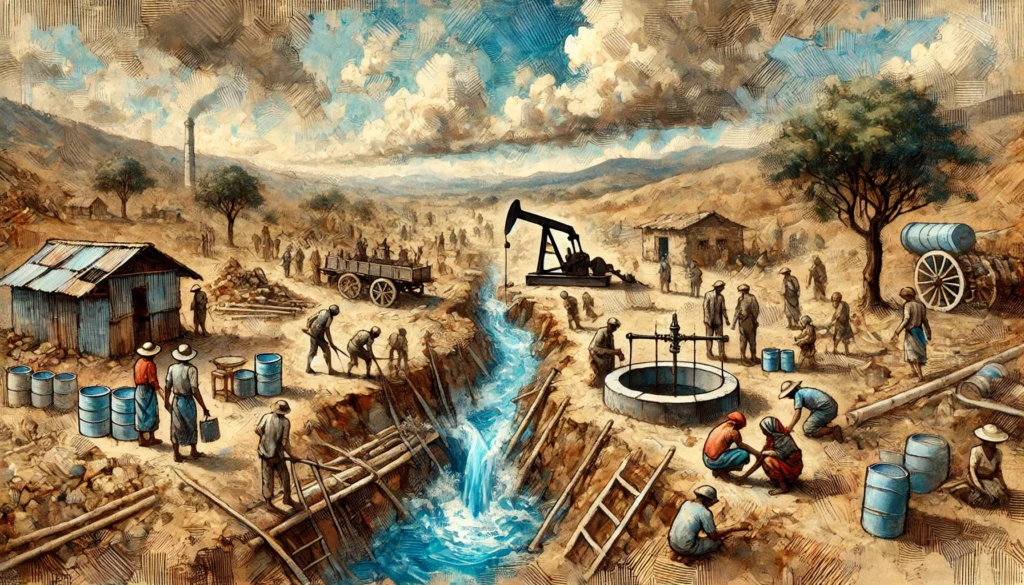
Despite numerous advancements, significant gaps remain in implementing water solutions at scale. These challenges span financial, regulatory, cultural, and environmental dimensions, making it imperative to adopt a multi-pronged approach that addresses root causes while fostering innovation and inclusivity.
Financial Constraints
- $114 billion annually is needed to ensure universal water access by 2030 (World Bank). Lack of financing hampers infrastructure projects in low-income regions.
Policy and Governance Issues
- Weak regulations worsen scarcity, especially in regions like India’s groundwater crisis. Without robust policies, aquifers are being depleted at unsustainable rates.
Cultural Resistance
- Traditional practices in Sub-Saharan Africa can delay the adoption of modern technologies. For instance, reluctance to adopt sanitation infrastructure often stems from deep-rooted beliefs.
Climate Change Impacts
- California (2021 drought): Agriculture and hydropower were heavily affected, showcasing interconnected crises. Addressing climate-resilient infrastructure is key to mitigating these challenges.
Overcoming Barriers
- Leverage microloans and blended financing (e.g., IFC Blended Finance initiative) to support small-scale water projects. This approach enables communities to take charge of their water systems.
- Collaborate with local leaders to ensure cultural relevance and acceptance of new solutions. Tailored messaging and community workshops can bridge gaps effectively.
Case Studies: Successful Sustainable Water Projects
Real-world examples of successful water projects offer valuable insights and inspiration for tackling similar challenges globally. These case studies underscore the importance of combining innovation, community involvement, and adaptability to achieve lasting impact.
Real-World Examples
- Solar Water Project (Sub-Saharan Africa):
- Reduced waterborne diseases by 40% through solar purification combined with local engagement. The project has become a model for scaling renewable water solutions.
- Pani Foundation (India):
- Revived thousands of hectares of land through watershed management, boosting groundwater levels. This initiative highlights the power of community mobilisation.
- Fog-Harvesting Nets (Chile):
- Produce up to 9,000 litres of water daily, transforming life in arid coastal areas. The project demonstrates how low-cost technologies can have high-impact results.
Future Trends in Sustainable Water Management
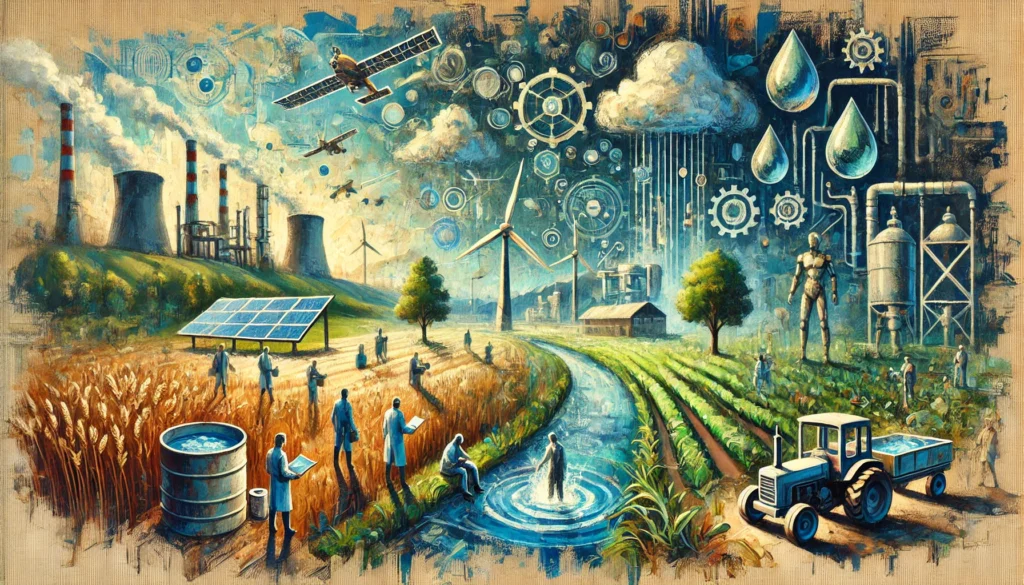
The future of water management lies in leveraging emerging technologies and adopting integrated approaches. By focusing on resilience, efficiency, and collaboration, these trends promise to redefine how water resources are managed in the decades to come.
Innovations on the Horizon
- Artificial Intelligence (AI):
- Singapore’s Smart Water Grid detects leaks and predicts demand, saving millions of gallons annually. AI can also optimise irrigation schedules for farmers.
- Decentralised Water Systems:
- Example: Solar-powered treatment plants in rural Australia reduce reliance on centralised infrastructure, offering greater resilience during crises.
- Nanotechnology and Biomimicry:
- Filters inspired by mangroves’ salt-filtering abilities could revolutionise desalination. Nanomaterials promise to enhance filtration efficiency while reducing costs.
Driving Progress Globally
- UN Sustainable Development Goals (SDGs):
- Goal 6 accelerates innovation and cross-border collaborations. Global funding programs, like those led by the Gates Foundation, are crucial to achieving these goals.
- Corporate Coalitions:
- Initiatives like the Water Resilience Coalition unite industries to address shared water risks, fostering innovation and investment.
Building Momentum for a Sustainable Water Future
Clean water is more than a necessity; it’s a catalyst for health, economic growth, and environmental sustainability. The innovative solutions and community-led approaches highlighted here demonstrate that the tools to solve the global water crisis are already within our reach. However, implementing them requires commitment from governments, organisations, and individuals alike.
You can make a difference by supporting initiatives that prioritise sustainable water solutions. Whether it’s advocating for policy changes, donating to water-focused NGOs, or adopting water-saving practices in your daily life, every action counts. Consider exploring partnerships with organisations like WaterAid or investing in cutting-edge technologies that transform how we manage water.
Together, we can create a future where clean water is accessible to all, driving progress and equity across the globe. Let’s act now to ensure that future generations inherit a world where water scarcity is a problem of the past.

